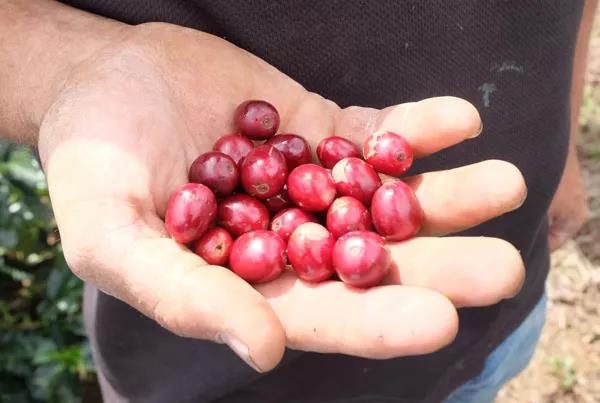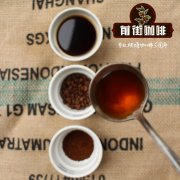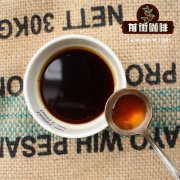Lim producing area of Ethiopia | Keshagsi Farm-Wind from the sun treatment of native species in Teana

Professional coffee knowledge exchange more coffee bean information please follow the coffee workshop (Wechat official account cafe_style)
Lim region of Ethiopia | Kesakesi Farm-what is the flavor of the native species of Teana treated by the sun?
Sounds of nature this bean is different from the familiar Yegashifi and Sidamo, and the producing area of Limu (Lim) has only begun to emerge in recent years. Lim is located in the southwest of the capital of Ethiopia, which falls between 1300m and 1900m above sea level, while to the south is the Djimma producing area. Now the recommended bean is' Teana'. It is an ancestral hybrid from Lim's historic farm Kossa Geshe (Kosakesi)!
Keshagsy Farm is located in the south of Lim producing area, at an altitude of 1900m, such a remote place is very difficult to find, and Teana also won the third place of the class.
Limu belongs to the southwest of Ethiopia, which is located between the two well-known producing areas of Djimma and Nekempte (Lekempti). It is located at high altitude and grows native varieties organically. It is located at high altitude and grows native varieties organically. Most of the coffee is washed with water, which is different from Sidamo's washing beans or Yega Sheffield in that his acid is bright but it has a spice that follows, and his wine style is more or less one of his characteristics. Coffee trees are shaded by ancient lush forest trees, and the trickle of natural springs flows through the supply of irrigation water. D.S.T (Direct Specialty Trade) system is an irregular Ethiopian auction, only through the SCAA cup test standard of more than 80 points of boutique coffee specialty coffee can hang its own name to trade with foreign raw bean merchants. Most of Lim's coffee is washed with water, unlike Sidamo or Yegashev in that Lim's acidity is bright but spicy, and one of the characteristics is more or less wine style. Coffee varieties are native to Ethiopia (Heirloom), and local small coffee farmers grow them in a 100% organic way. Soil is Vertisols soil. Plant between 1850 and 1900 meters above sea level.
The output of lim is low, and it is mainly exported to Europe and the United States. It is not easy to buy in China in the past, but it is very popular in Europe and America, and its fame is second only to Yega Xuefei. Lim's taste spectrum is different from that of Sidamo and Yega Chuefei: its body is thinner, and its floral and citrus aromas are inferior to those of Yega and Sidamo, but with a hint of grass and cocoa and sandalwood. Limu Coffee coffee is famous for its aroma and wine taste (spicy and Winnie flavor) and is very popular in Europe and the United States. The acidity and alcohol thickness are good, and the water-washed lim coffee is also the favorite of fine coffee. The bean shape is medium, greenish blue, mostly round.
Even though its reputation is not as good as that of sidamo and yirgcheffe,limu, it still produces a lot of excellent coffee. Most of the producers in this area are small, but there are several large state-run coffee plantations with green beans and bluish green beans, and most of the lim exports are G2 grade, which tastes like Yega, but the viscosity is thin, but the aroma of flowers and fruit is obvious, and the sour taste is softer than Yega Xuefei.
AFCA 2015 Murray 2016 Ethiopia Competition 3rd, solarization group 1st.
Qianjie recommended cooking:
Filter cup: Hario V60
Water temperature: 90 degrees
Degree of grinding: small Fuji 3.5
Cooking methods: the ratio of water to powder is 1:15, 15g powder, the first injection of 25g water, 25 s steaming, the second injection to 120g water cut off, waiting for the powder bed water to half and then water injection, slow water injection until 225g water, extraction time about 2:00
Analysis: using three-stage brewing to clarify the flavor of the front, middle and back of the coffee. Because V60 has many ribs and the drainage speed is fast, it can prolong the extraction time when the water is cut off.
Important Notice :
前街咖啡 FrontStreet Coffee has moved to new addredd:
FrontStreet Coffee Address: 315,Donghua East Road,GuangZhou
Tel:020 38364473
- Prev

Brazil Pantano Pantano Manor Coffee how to drink well _ Brazilian Hirado Coffee beans roast and share
Professional coffee knowledge exchange more coffee bean information please follow the coffee workshop (Wechat official account cafe_style) Brazilian coffee Pantano / Brazil / Yellow bourbon et al. / semi-washed Brazil Cerrado Fazenda Pantano (YELLOW BOURBON) this is the yellow bourbon produced by Pantano Manor in the Cerrado region of Brazil, this estate is located 1007-1165 meters above sea level, this high
- Next

Suggestions on tanning and brewing of all-red fruits in Louise Manor, Brazil _ introduction of coffee varieties in Louise Manor, Brazil
Professional coffee knowledge exchange more information about coffee beans Please follow the coffee workshop (Wechat official account cafe_style) speaking of Brazilian coffee, you may hear a lot of voices. Many people think that Brazilian coffee is of mediocre quality and can only be used as part of mixed beans. Some people think that Brazilian coffee has moderate acidity and is very suitable for public taste. Friends who have done research on Brazilian coffee can also visit
Related
- Detailed explanation of Jadeite planting Land in Panamanian Jadeite Manor introduction to the grading system of Jadeite competitive bidding, Red bid, Green bid and Rose Summer
- Story of Coffee planting in Brenka region of Costa Rica Stonehenge Manor anaerobic heavy honey treatment of flavor mouth
- What's on the barrel of Blue Mountain Coffee beans?
- Can American coffee also pull flowers? How to use hot American style to pull out a good-looking pattern?
- Can you make a cold extract with coffee beans? What is the right proportion for cold-extracted coffee formula?
- Indonesian PWN Gold Mandrine Coffee Origin Features Flavor How to Chong? Mandolin coffee is American.
- A brief introduction to the flavor characteristics of Brazilian yellow bourbon coffee beans
- What is the effect of different water quality on the flavor of cold-extracted coffee? What kind of water is best for brewing coffee?
- Why do you think of Rose Summer whenever you mention Panamanian coffee?
- Introduction to the characteristics of authentic blue mountain coffee bean producing areas? What is the CIB Coffee Authority in Jamaica?

